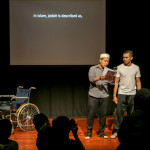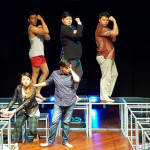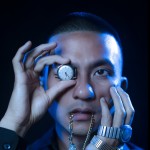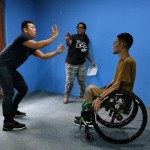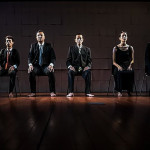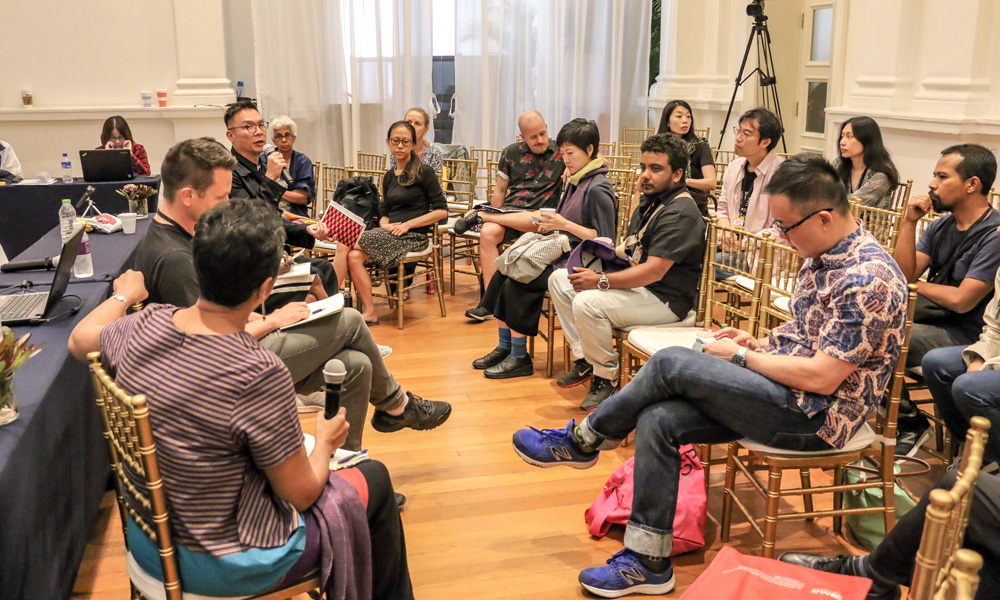
The concluding wrap-up session on 26 May at ADN Conference 2019. Only invited speakers participated in the discussion.
On 26 May, the invited speakers of the Asian Dramaturgs’ Network (ADN) Conference 2019 gathered back in the Festival House Blue Room to share highlights, insights and critiques from two days of presentations and intense discussions. Titled “Dramaturgy and the Human Condition”, this year’s conference saw a diverse group of dramaturgs, artists and scholars from the region discussing about issues of change, choice and humanity in performance-making in keynotes, panels and roundtables. Drawing from their discussion during the wrap-up session, here are some of the key takeaways from ADN Conference 2019.
Performing sensuousness and gentleness
ADN Co-director Charlene Rajendran observed that “sensuousness” has been notably absent in the conference discussions of the human condition and human bodies in performance. According to Rajendran, sensuousness is a pertinent concept, especially in the context of 21st-century lives becoming increasingly digital and disembodied.
Australian video artist and dramaturg Martyn Coutts added on to Rajendran’s observation by highlighting State control of bodies, a point which Singaporean artist Loo Zihan had brought up. Coutts believes that performance can counter State violence through “radical acts of vulnerability”, citing several fellow speakers’ presentations which referred to works exhibiting care and sensitivity in approaching the human body. It is in the aesthetics of softness, slowness and gentleness which creates space and compassion. Coutts concluded, “As dramaturgs, we hold space for others… I wonder if as people, we can be gentle with each other, and somehow, that will carry forward?”
Dramaturging body politics
Indian theatre-maker and trans activist Gee Imaan Semmalar drew a link between the human condition and body politics. Analogising the State as a dramaturg and its citizens as actors following a script of citizenship, he pointed out that many of the conference presentations were about dramaturgs and performance-makers creating space for alternatives to the State-prescribed script. He cites, as an example, the keynote lecture by Japanese scholar Tadashi Uchino on the concept of theatre-as-assembly.
Dramaturgy then, as Semmalar extrapolated, is an assemblage and careful management of tenuous, fragile social relations. It is as much a sociological process as it is a theatrical one, which can help bring audiences together to imagine alternative communities and futures.
Malaysian director and actor Jo Kukathas suggested that the work of the dramaturg and artist right now is to heal, to rebalance the imbalances in the world, with the goal of arriving at a common humanity. And alongside the notion of healing are questions of care and ethics for audiences and artists alike, which had emerged repeatedly during the conference discussions.
Interrogating technology and humanity
Semmalar posited that it was crucial in an exploration of the human condition, to evaluate what choice, freedom and action mean to us, both historically and in the present. Referencing the panel on “Dramaturgy and Technology”, he argued that with how integral technology has become to our lives, technology can no longer be considered a mere tool, but rather, as constituting the human body. He cites the experience of trans men as an example of how technology creates and alters the human body and self.
“It is very strongly linked, how technology has changed the social structure,” Su Wen-chi, a new media artist based in Taiwan, told the ADN speakers. She acknowledged that there is indeed politics in employing technology, even in the realm of art and performance. Su warned that, much like any other tool, technology can become a weapon if misused. But it can also be used in art to help connect communities and peoples. That being said, she also cautioned dramaturgs and performance-makers against defaulting to binaries such as technology versus human, or to ascribe fixed moral values to either side.
On the other side of the coin, Singaporean theatre academic Robin Loon said he would be interested in further explorations on dramaturgy and the non-human. Citing Malaysian cultural researcher Janet Pillai’s keynote presentation, Loon recalled how Pillai’s research on Asian dramaturgies drew on case studies of performances created for non-humans, such as deities and ghosts. Loon said more discussion of performances for non-humans will, in fact, reveal more about the dramaturgies of the social and the human condition.
Embracing complexity
Referring to Malaysian cultural researcher Janet Pillai’s keynote presentation on multiple Asian dramaturgies, Kukathas said that the dramaturg must be open to exploring various possibilities, and not just fall back on tradition or convention.
Both Kukathas and Semmalar argued that the work of the dramaturg is to embrace complexity. It is also why the dramaturg and dramaturgy seems to escape definition, a discussion thread which emerges again and again from one ADN conference to another. But as Pillai stressed in her keynote, “It doesn’t matter what you call yourself, as long as you do the work”.
ADN Co-director Lim How Ngean also pointed out that over the years, the discussions at ADN gatherings have moved from questions of what the dramaturg does and what dramaturgy is, to include exploring what the dramaturg and dramaturgy itself can do for a performance, for art practitioners, and for society at large.
And over the past two days of ADN Conference 2019, no definite conclusions have been drawn. But as Rajendran said in her opening address, “the password to ADN is open dialogue” – the important thing is to keep the conversations on dramaturgy in Asia going, and for the dramaturg to embrace complexity and capacities for change.
By Adelyn Tan and Daniel Teo
Published on 7 July 2019
ADN Conference 2019, held on 25 & 26 May 2019, was co-presented by ADN and Singapore International Festival of Arts, and organised by Centre 42. For more information on ADN Conference 2019, head to the ADN website at asiandramaturgs.com. Documentation on this year’s conference proceedings will also be published on the website later this year.

